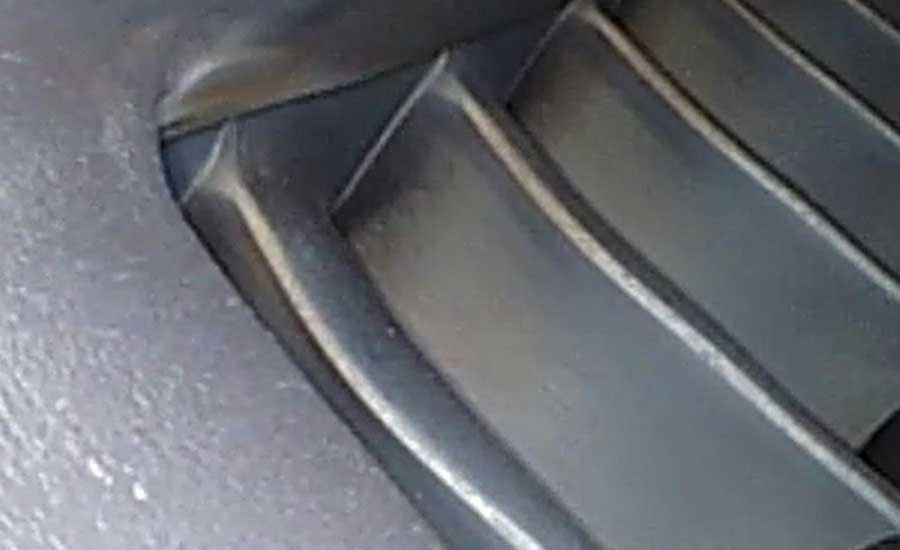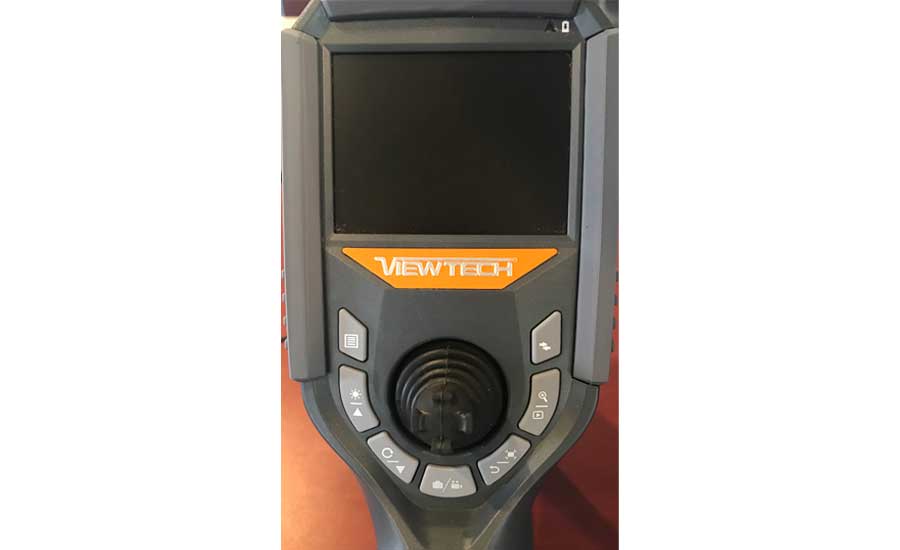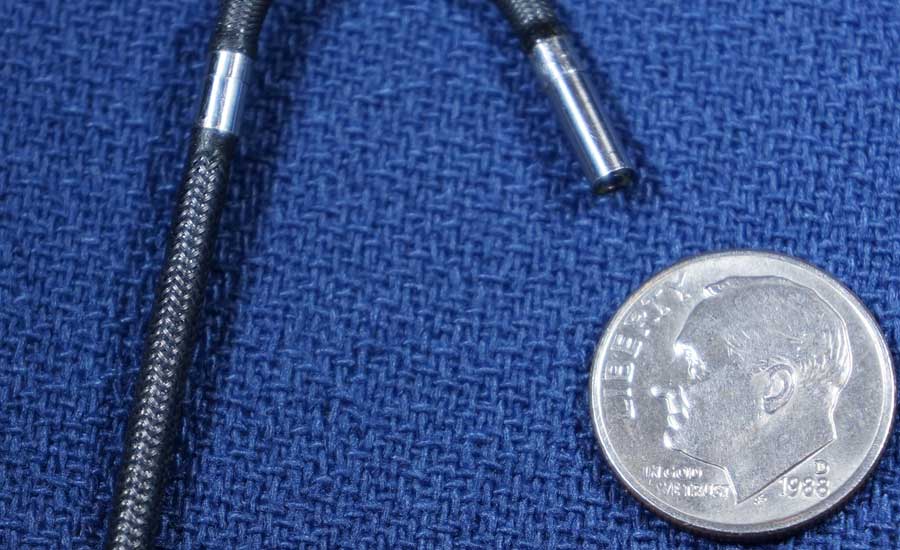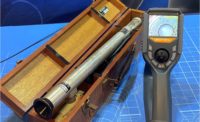Advancements in technology continue to enhance the capabilities of all areas of industrial quality and process control, and this is certainly the case within the various disciplines of nondestructive testing (NDT). Whether we consider industrial radiography, ultrasonic testing, eddy current, or remote visual inspection (RVI), the name of the game is always higher resolution, greater detail, improved accuracy, and faster speeds.
In the same way that industrial radiography benefits from the huge R&D investments made in medical radiography, manufacturers and users of RVI equipment benefit from the technical breakthroughs achieved in medical endoscopy and other fields. For example, the improvements in micro cameras and lenses that are driven by the cell phone industry accrue in a trickle-down fashion to industrial video borescopes. The same can be said of the rapid gains made recently in micro COB (chip on board) LED illumination, which delivers extremely powerful light output from a circular footprint, perfect for the distal tip of a video borescope. These distally-mounted LEDs produce the same high intensity light that was previously only available in borescopes utilizing fiberoptic illumination, resulting in increased durability and lower costs.
Small Diameter Insertion Tubes
The most consequential result of these overarching technical trends on RVI is the very small diameter insertion tubes that can now be found on a full-featured video borescope. Why is this important? Because smaller diameter insertion tubes permit access to smaller and narrower spaces, bringing the benefits of nondestructive visual examination to more industries and applications than ever before. For example, if we use VGA resolution (640x480) as a benchmark—a standard that is deemed sufficient for perhaps 90% of applications when we consider that the target viewing area is typically less than 42 inches—we can trace the evolution of the diameters that deliver this level of image resolution over the past 15 years.
In that time, the diameter necessary to house the components required to provide VGA resolution has shrunk by more than 50%, from 6.0mm to just 2.8mm. And keep in mind that this is in a borescope with full, four-way, joystick-controlled articulation, which allows very precise steering and targeting within the visual field. Even the fact that four-way articulation can be achieved in this extremely small diameter is due to the gains made in micro EDM and assembly techniques.
The new VGA threshold of 2.8mm has opened up several categories of industrial processes and applications that were previously unable to utilize RVI because the insertion tubes were too large or the image quality and illumination at this diameter were too poor. These include casting inspections, small ID orbital welds, difficult to access gear boxes and bearings, avionics installation and troubleshooting, and medical devices and PCBs.
As we go up in size from 2.8mm to 3.9mm or 6.0mm (generally considered the standard or most common diameters for video borescope insertion tubes), the capabilities in terms of image resolution and light output increase accordingly, with full HD resolution and ultra hi-output LED modules facilitating inspections of larger chambers, pipes and mechanical assemblies.

PT6 Inspection Image
Better Base Units
Besides the primary benefits owed to new technologies in the form of smaller diameter VGA borescope insertion tubes and higher-resolution standard size insertion tubes, the base unit, or platform, which is shared across all insertion tube types, is becoming more capable and rugged. Features that are now considered standard for most video borescopes include variable LED illumination, multi-step zoom, image rotation/inversion, built-in IPS anti-glare display, on-board photo/video/audio capture and playback, and enough built-in memory to store thousands of photos and hours of inspection video footage. Furthermore, most borescopes today are powered by interchangeable and rechargeable Li-ion batteries, which provide several hours of continuous use.
From a ruggedness and durability standpoint, tungsten-braided insertion tubes are now the norm, although polyethylene-coated insertion tubes are also available for application that require smooth, non-abrasive instruments, such as sanitary or high purity stainless steel tubing. Hermetically sealed bending sections protect the micro camera/LED module from liquid intrusion, and base unit IP ratings of 54 ensure that the unit is ready for field work in all weather conditions.
It is important to note that while video borescopes are becoming feature-rich, manufacturers are very deliberate in the layout and design of control buttons and software menus so that complexity and the “learning curve” are reduced as much as possible. Unlike most other NDT instrumentation, a well-designed video borescope does not require days-long training in order to leverage its full capabilities. Naturally, a technician with several years of experience using a borescope will be more adept, but even a novice will be able to put a modern borescope to effective and efficient use within a very short period of time.

Simple interface of a modern borescope
Borescope Selection
As with most other technical instruments, there are tradeoffs when it comes to product selection. Thankfully, with video borescopes, these tradeoffs are pretty straightforward and easy to understand. In the broadest terms, you can choose the insertion tube diameter and the insertion tube length. For a fully articulating video borescope, insertion tube diameters range from 2.8mm to 6.0mm, and lengths range from 1.0m to 5.0m or, sometimes, even 8.0m. The tradeoffs associated with the various diameters are as follows: larger diameters mean better image resolution, higher light output, better durability and lower cost vs. smaller diameters. The key advantage of smaller diameters is that they allow you to access and inspect areas where larger diameter insertion tubes simply will not fit.
As for insertion tube lengths, shorter insertion tubes have better maneuverability, higher durability and lower cost vs. longer insertion tubes. The main advantage of a longer insertion tube is that it allows you to inspect areas that may not be reachable with a shorter tube.
In deciding which borescope is right for you, first talk to an experienced borescope sales rep about your specific application. Within a few minutes, the rep will be able to narrow down the options and determine the type of scope that is best suited to your requirements, balancing all of the tradeoffs mentioned above. Next, insist on an on-site demo of the borescope and put it to use on your real-world applications. Having the scope in your shop for at least a full week is ideal, as this is the best way to be 100% sure that you are getting exactly what you need in order to improve your inspection, maintenance and repair capabilities. During the demo period, go through several cycles of each of your typical inspections and try to use all of the various features of the scope. You will find that with each subsequent use, you’ll become more comfortable with handling the borescope, manipulating the control buttons and steering the camera/LED module with the joystick. If other colleagues will be involved in the purchase decision, be sure that they also spend time working with and evaluating the scope.

2.8mm insertion tube and dime
You Can’t Fix What You Can’t See
Ask any technician who uses a borescope on a regular basis and they’ll tell you that they consider it an indispensable part of their tool kit. If it has been a few years since you considered a video borescope for your inspection applications or facility, now may be a good time to take another look. Like all technology products, borescopes are getting better all the time. As cameras and LEDs continue to get smaller and more powerful, the resulting small diameter insertion tubes enable visual assessment in areas that were inaccessible just a few years ago. And with HD resolution coming to standard sized insertion tubes, the resulting level of visual detail is truly incredible.


